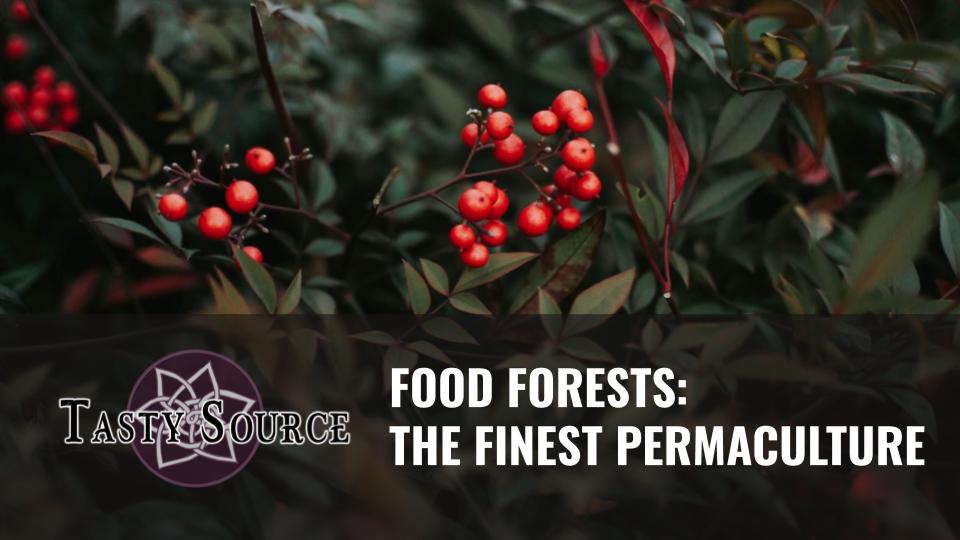Author: Tasty Source – Photographer: Jessica Furtney – Date: August 2020

Even though permaculture is a term used nowadays as a catch-all for ecologically sustainable gardening and farming practices, it’s rarely understood as an economically viable approach to growing food. Many farmers are on the edge of financial collapse, and so change seems like a daunting and just about impossible endeavor. That kind of pressure isn’t natural—it’s revealing of an imbalance hindering the growth and creativity of our farmers.
Never Ending Food explains how permaculture systems seek balance and growth:
Permaculture is based on natural systems like those that we see in forests. In a forest system, there are multiple layers of vegetation growing together in a very diverse setting. We see many types of trees, shrubs, plants, insects, animals, and various other things all living together in a system that continually strengthens itself.
Working with the earth and being an integral component of a permaculture is about being aware, and acting in the interest of, the overall health of the system. Showing the world that biodiversity in an ecosystem is worth investing in, food forests are a shining example of how food can be grown sustainably and with little effort.
A forest is the achievement of combining organisms to maximize collective stability. They are one of the most stable ecosystems on earth. The circle of growth and waste is closed so that waste becomes the fuel for growth. Trees extract nutrients from the soil into their trunks and out into their leaves. When seasons change, leaves fall and those nutrients are recycled back into the soil.
Over 10,000 years ago when humans were primarily in hunter-gatherer tribes, forests were our main source of food. While those tribes were nomadic, they paid particular attention to the types of food and herbs of the forest and the seasons when they were most bountiful. They also learned that pruning plants created more fruitful growth and so they began cultivating well before the first gardens and farms were established.
While the history of humanity’s relationship with forests reveal a beautiful symbiotic relationship, food forests of today show us that we can reestablish that connection. When we strive to become a supportive element of our ecosystem, we discover and implement permaculture strategies. Many food forests incorporate planting crops with companion plants to maintain insect balance, building swales to increase rainwater infiltration and practicing crop rotation strategies for soil health.
Amy Stross, the creator of Tenth Acre Farm and an overall permaculture hero, has a virtual tour of three American food forests here.
Regenerative and sustainable
![]() Take Action:
Take Action:
| Take Classes | Get Consultations | Contact Us |
![]() Navigation:
Navigation:
| SiteMap | Informational Pages | About Us | Farms | Markets | Businesses |
![]() Most Recent Blog Posts:
Most Recent Blog Posts:
©2022 tastysource.com